Charles P. Leverich | |
|---|---|
 | |
| President of the Bank of New York | |
| In office 1863–1876 | |
Charles Palmer Leverich (July 17, 1809 – January 10, 1876) was an American banker.
Charles P. Leverich | |
|---|---|
 | |
| President of the Bank of New York | |
| In office 1863–1876 | |
Charles Palmer Leverich (July 17, 1809 – January 10, 1876) was an American banker.
Leverich was born on July 17, 1809, in Newtown, Queens on L.I., N.Y. [1] [2] He had three brothers: Henry S. Leverich, James Harvey and Charles E. Leverich. [2] [3]
From 1834 onwards, he became a factor for Stephen Duncan, the wealthiest cotton and sugar planter in the Antebellum South. [2] [3] He also served as a factor to the Minor and Connor families. [3] Additionally, he was a factor to planters William Newton Mercer, Levin Marshall, William St. John Elliot, Francis Surget and his son Francis Surget Jr., Sam Davis, William T. Palfrey, Mary Porter and John Julius Pringle. [3] He operated under the name of 'Charles P. Leverich & Co.', with a Southern office in New Orleans, Louisiana. [4]
He joined the board of directors of the Bank of New York in 1840. [2] [3] He went on to serve as its Vice-president in 1853 and its President from 1863 to 1876. [2] [3] [5] In this capacity, he helped raise US$50,000,000 for the Union army during the American Civil War of 1861-1865. [3]
Both he and his brother Henry married nieces of Stephen Duncan's. [2] His wife, Matilda Duncan Gustine (1816–1896), was a daughter of James Gustine of Natchez, Mississippi. They married in Philadelphia on September 17, 1839, and had at least four children, including: [6]
He died at his home in Union Place on January 10, 1876. [8]

The Indiana Territory, officially the Territory of Indiana, was created by an organic act that President John Adams signed into law on May 7, 1800, to form an organized incorporated territory of the United States that existed from July 4, 1800, to December 11, 1816, when the remaining southeastern portion of the territory was admitted to the Union as the state of Indiana. The territory originally contained approximately 259,824 square miles (672,940 km2) of land, but its size was decreased when it was subdivided to create the Michigan Territory (1805) and the Illinois Territory (1809). The Indiana Territory was the first new territory created from lands of the Northwest Territory, which had been organized under the terms of the Northwest Ordinance of 1787. The territorial capital was the settlement around the old French fort of Vincennes on the Wabash River, until transferred to Corydon near the Ohio River in 1813.
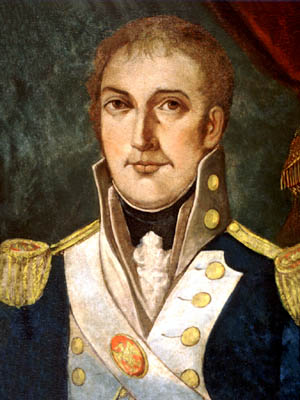
William Charles Cole Claiborne was an American politician and military officer who served as the governor of Louisiana from April 30, 1812 to December 16, 1816. He was also possibly the youngest member of the United States Congress in the history of the United States, although reliable sources differ about his age.

Murphy James Foster was the 31st Governor of the U.S. state of Louisiana, an office he held for two terms from 1892 to 1900. Foster supported the Louisiana Constitution of 1898, which effectively disfranchised the black majority, who were mostly Republicans. This led to Louisiana becoming a one-party Democratic state for several generations and excluding African Americans from the political system.
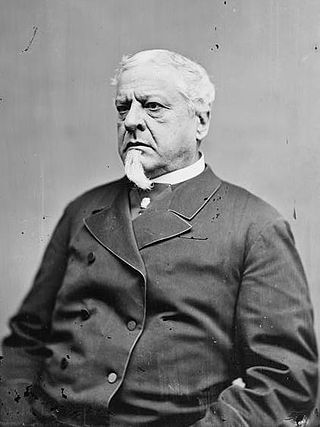
William Henry Hunt was the 29th United States Secretary of the Navy, Minister to the Russian Empire and a judge of the Court of Claims.
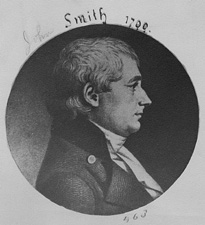
John Smith was an American politician who served as a United States senator from New York from 1804 to 1813. He previously was the U.S. representative for New York's 1st congressional district from 1800 to 1804. He was a member of the Democratic-Republican Party.
Jonathan Lawrence was an American merchant and politician from New York.

James Biddle Eustis was a United States senator from Louisiana who served as President Cleveland's ambassador to France.
Samuel Riker was an American politician and a member of the United States House of Representatives for New York's 1st congressional district from 1804 to 1805 and again from 1807 to 1809.
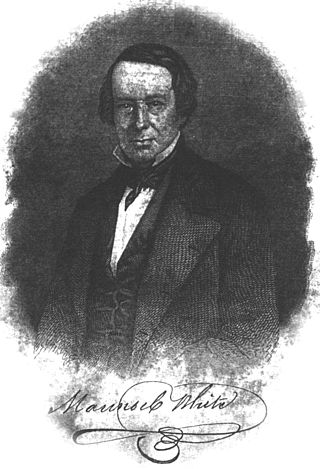
Maunsel White was an Irish born American Episcopalian politician, merchant, and entrepreneur. He is remembered for promoting the use of peppers and peppery sauces – a brand of which his descendants still manufacture today. Although he is usually associated with New Orleans, he also resided in Plaquemines Parish, Louisiana, where he owned Deer Range Plantation, in addition to three other plantations, with 191 slaves in 1850.

George Mathews Jr., was a Judge of the Superior Courts of the Territory of Mississippi and the Territory of Orleans, and Presiding Judge of the Louisiana Supreme Court from 1813 until his death in 1836. His ruling in Marie Louise v. Marot was cited as precedent by dissenting U.S. Supreme Court Justice John McLean in the 1856 landmark Dred Scott v. Sandford case.

George Eustis Sr. was chief justice of the Louisiana Supreme Court in 1838. He was also one of the founders of the Pontchartrain Railroad and a benefactor of the University of Louisiana, now Tulane University.

James Hampden Robb was an American merchant and politician from New York.

Stephen Duncan was an American planter and banker in Mississippi. He was born and studied medicine in Pennsylvania, but moved to Natchez District, Mississippi Territory in 1808 and became the wealthiest cotton planter and the second-largest slave owner in the United States with over 2,200 slaves. He owned 15 cotton and sugar plantations, served as President of the Bank of Mississippi, and held major investments in railroads and lumber.

Captain William J. Minor was an American planter, enslaver, and banker in the antebellum Southern United States. Educated in Philadelphia, he lived at the Concord plantation in Natchez, Mississippi, and served as the second President of the Agricultural Bank. He was the owner of three large sugar plantations in Louisiana and supported the Union during the Civil War for the stability of the sugar trade.
Henry Michael Hyams was an American lawyer, planter and Democratic politician. He served as the 7th Lieutenant Governor of Louisiana from 1862 to 1864 under Governor Thomas Overton Moore during the American Civil War, when Louisiana joined the Confederate States of America. He was an advocate of slavery in the United States.
Levin R. Marshall was an American banker and planter in the Antebellum South. He was a founder and President of the Commercial Bank of Natchez, Mississippi. He owned 14,000 acres in Mississippi and Louisiana, and 10,000 acres in Arkansas.

John Randolph Grymes was a New Orleans attorney, member of the Louisiana state legislature, U.S. attorney for Louisiana district, and aide-de-camp to General Andrew Jackson during the Battle of New Orleans.

The Boston Club is an exclusive private gentlemen's club in New Orleans, Louisiana, US, founded in 1841 as a place for its white members to congregate and partake in the fashionable card game of Boston. It is the third oldest City Club in the United States, after the Philadelphia Club (1834) and Union Club of the City of New York (1836).

Alexander Warner was an American Union Army officer, banker, planter, and Republican politician. He was the 15th Secretary of State of Mississippi, the 44th State Treasurer of Connecticut, and a member of the Kansas House of Representatives.
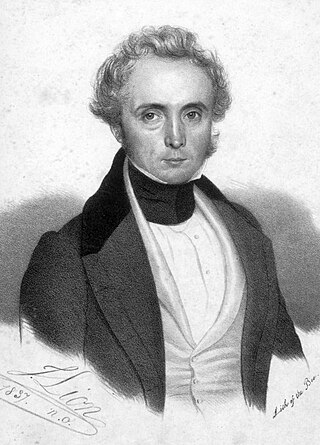
William Newton Mercer (1790-1874) was a surgeon and civic leader in New Orleans during the nineteenth century. His residence later became the clubhouse of The Boston Club, which has been associated with the history of business and Carnival in New Orleans.